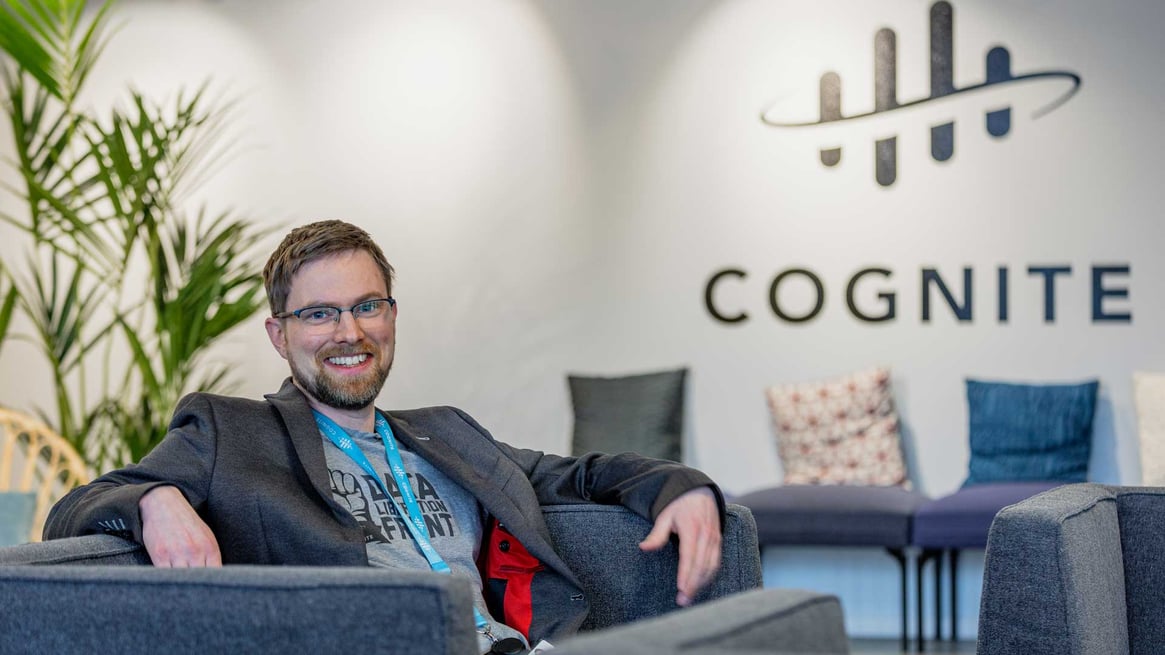
”As consumers, we have become accustomed to collecting all data and information in the smartphone. But then we go to work, where we often deal with different computer systems that don’t communicate well with one another. Our core product at Cognite is designed to solve that. We create software which pulls information from various sources to make things more intelligent. We truly believe our product will be as revolutionary to the industry as the smartphone was to the consumer.” - Magne Elmot, Principal Solution Architect at Cognite
This is how Magne Eimot usually explains what he does at work. He and Linda Weimann are solution architects at Cognite.
“I usually say that we have a great product in Cognite, but for the customer to be able to benefit from it, data must be available,” says Linda. “You need someone who understands both sides of this challenge. This is where solution architects come in.”
Magne and Linda are part of a team of around 20 solution architects, bringing with them many nationalities with very varying backgrounds in information technology. Some have experience as software developers, others as IT consultants.
“We all come from different places, but all of us like to work closely on technical things. We’re all motivated through working with customers and understanding complex technical challenges,” says Magne.
Linda agrees. “There is an enormous landscape of different tools that we must know, so it is important that we have a diverse team of experts in different fields,” says Linda. “If I come across something I do not know enough about, I can always talk to someone else here and learn more.”
Rising to meet fascinating technical challenges
More often than not, a customer comes to Cognite with a problem they want to solve, or a process they want to improve or streamline.
“One of our customers is a shipping company with a large fleet of vessels,” says Linda. “They wanted to raise safety, make operations more sustainable, and not use more fuel than necessary.” Her team’s job was to help the company find and contextualize the data they needed to optimize operations.
Often solution architects work on one or more business use cases at a time. “Our job as solution architects is to find out what kind of data we are going to retrieve from the various silos in the customer's systems, and how we are going to integrate them into the Cognite platform,” explains Magne. “Our goal is to move a use case to a defined architecture where we find out which components need to be in place.”
"I want to know where forklift B is parked right now."
One of the customers both Linda and Magne have worked with is Aker Solutions in Stord, which wanted to develop a digital twin and a full 3D visualization of its wharfs as a first step towards digitization.
“This request is quite typical for a good part of the companies we work with,” says Magne. The overview serves as a basis for more use cases, as data analyses on the overview can show several opportunities for increasing efficiency.
A challenge experienced by Aker Solutions in Stord was knowing where their forklifts were at all times. The wharf is a large area, and people spent a lot of time walking around looking for a forklift or a container.
“We solved this through the wharf overview,” says Linda. “They can now go into a 3D map and see where things are, just like in Google Maps. This saves a lot of time.”
“When a factory has this kind of a digital overview in place, it can be useful to analyze which tools are used the most, and look at how the toolbox can be standardized so that there is less time to change tools,” adds Magne. “It’s a great feeling to be able to see this type of optimization improve production and efficiency.”
Every day is an opportunity to learn
Weimann and Eimot are passionate about their roles as solution architects, as it’s an important bridge between our customers, partners, and the rest of Cognite. They’re eager to add more solution architects to their team.

“We don’t really have a set series of requirements for the role,” says Linda. “We have a lot of engineers and other people who develop tools to get the data from A to B, and when I'm on a project, I more or less represent Cognite as a technical expert on everything.”
The role is challenging, but Linda has great colleagues ready to help her understand what is needed to serve the client in the best possible way. “I am always learning something new,” laughs Linda.
Magne agrees. “There is a fantastic culture in Cognite,” says Magne. “It’s easy to get help when you need it, and no one hesitates to ask me if I can contribute something. We work with technology that is constantly evolving. With industries that are really going through major digitization and restructuring processes right now, our job can be tremendously fulfilling.”
An added bonus for Magne is his chance to learn about industries that he otherwise would never have been exposed to.
“It’s very cool to learn about how hydropower plants work, and get in-depth knowledge of how a turbine is designed to produce electricity in the best possible way,” says Magne. “Instead of working in an office that develops, I get to visit many exciting industrial companies and experience first hand the transformation that is underway.”
Cognite is growing fast, and our diverse team along with it. Don't wait. Apply today and come along for the ride.